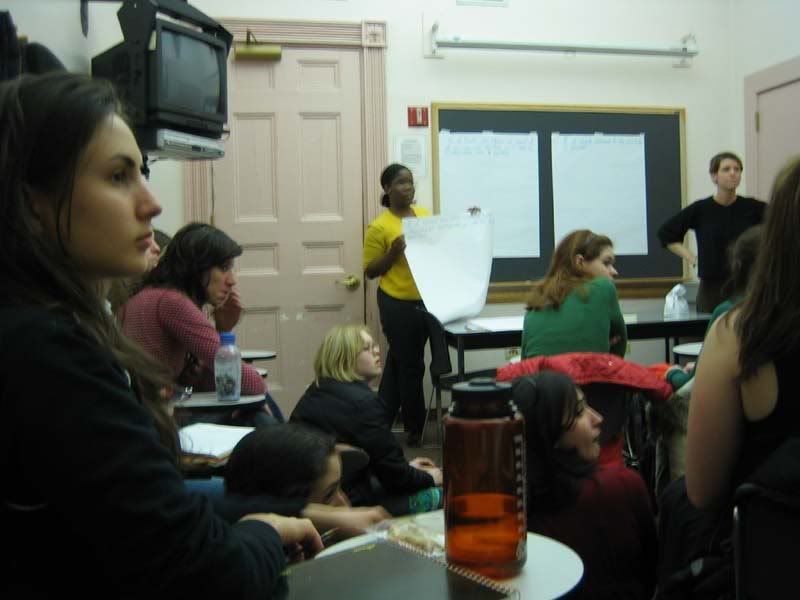 Reflection Session Minutes
Reflection Session Minutes Visit from Nell, the COO of Project Health, joined about a year ago.
Project Health is now, after 12 years of growth, a national organization and is thinking about different issues:
--organizational growth
--working with a consulting firm, New Profit?
Apparently we have been growing in ‘exactly the right way’
Project Health is spread into sites in a very organic way, as opposed to an
organization that standardizes a program in a very clearly defined, but inflexible
manner.
Ex. So instead of dictating how Baltimore should launch an FHD program, explain more of ‘this is how we roll’.
“evolve”
--come up with a set of hypotheses to test this summer to help us understand what actually drives the impact in the ways we define success.
--thought of having a series of RS’s and think of what volunteers thing, then prioritize the laundry list into some set of things to test using a PH-wide volunteer poll
In this RS, ask volunteers to brainstorm actions we can take to increase % of clients that…
% of clients who obtain at least 1 of the resources identified as a need in the initial intake w/in 3 months.+continual follow-up with clients on part of the volunteers, creating the opportunity for the client to communicate with us
+ensuring that client comes away with some tangible resource/info at initial encounter
+volunteer contacting a resource
--resource exists/correct information/reliability of resource
--give them a person/name to look for
--set-up an appointment timeà plan of action
+organized set of handouts/resources (express desk sheets/personal express desk sheets)
--concise good (name, address, phone number)
-one sheet v. packet
-multi-language sheets
+attitude toward clients during interaction: warm, welcoming. Beware of condescension.
--tension between being legitimate v. too legitimate, e.g. looking for-profit
+better communication between volunteers, ex. re: resources
+narrow down resources we can provide
--Problem with housing as a resource we can’t provide. Take it off?
--Housing is a primary attractant to the desk, and gives us an opportunity to implement the flexible/fungible income idea, and try to get clients with housing needs other services that they might qualify for, but that they might not have come to the desk in search of.
--Success is a function of what you are trying to measure. If we just define it differently, we aren’t evaluating the same thing.
% of clients referred to the desk by a provider. +Continuity Clinic/community lectures
+face-to-face conversations, communication during shift
--constant and courageous contact\
--have a list of doctors with their names/pictures, so we can pretend to know people when we say hello
+e-mailing them updates, interesting stories, data? Communicating success stories
--sending them feedback from clients, blog
--even cases where we tried but failed
--ask clients to tell the doctors about success
+community rotations, physician involvement in desk
+inviting them to speak at RS
+FHD checkbox or flag in the medical charts/electronic records
--referral w/o physically coming to the desk or writing something
--referring as easy as possible
+flyers/posters in the examination room “Ask me about FHD” (for the parents/clients to see); buttons for physicians to wear
% of referred cases which result in some subsequent communication with the referring provider +success letter/success e-mail to provider
+in person debrief
+interesting blog
+case conferences
--David Yin, CC'09
 Pictured are volunteer Artemis Shaw (left), CC '11 and program coordinator Sonia Sekhar (right), BC '08 together on our Thursday shift.
Pictured are volunteer Artemis Shaw (left), CC '11 and program coordinator Sonia Sekhar (right), BC '08 together on our Thursday shift.
